 | ||||||
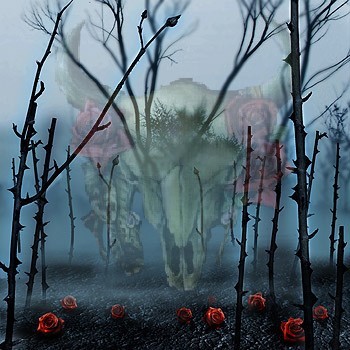
By
OverMuch
Dead Rebel Of The Week
~ Salvador Dali ~
I'm sure most of you quasi-knowledgeable cats know who Salvador Dali was. That crazy bastard with the moustache who painted the melting clocks, right?
Yep, that's him, alright. What you may not understand, though, is why he was so damn important, and why he fits our criteria for Dead Rebel of the Week to a tee.
Dead? Check. A rebel? Certainly. Crazy sunofabitch? Absolutely.
So yes, Dali was a kooky guy who, on the surface, painted some crazy stuff. But open your mind a little and dig a little deeper. I'll be your guide on a very abbreviated tour of his scene. I'm here to help, after all.
First, a short history. Dali was born in 1904 in Spain, some fifteen years before my grandpa, who, incidentally, would never, ever, ever have understood Dali's work, either. But I digress. His mom (Dali’s, not my grandpa’s) encouraged young Salvador's artistic tendencies, and he took that shit and ran with it.
During his formative years, it seemed he was destined to be an artist. He attended drawing school, and held his first exhibition in 1919 - the year my aforementioned grandpa was born.
When Dali turned 18, he split his small Spanish hometown for the bright lights of big-city Madrid. There, he studied at the San Fernando School of Fine Arts, where he started freaking people out with his long hair, freaky clothes, and yes: his insanely weird moustache. Salvador was fond of dressing in the style of the early 1900’s, which, while certainly cool, probably didn’t do a lot to get him dates. Again, I digress.
Moving rapidly, we find that Dali traveled and studied a lot, perfecting his style. He moved from cubism to Dada, and finally found his groove with a unique brand of surrealism.
In 1931, Dali painted the picture you just saw at the top of the article; The Persistence of Memory. To most people, it's just weird. To people who dwell on such images, it represents the scientifically curious aspect of Dali's personality. It represents the notion that time is just an illusion.
See, Dali had became fascinated with atomic theory in the years leading up to World War II. The new quantum mechanics were all the rage, and the idea that all simple, solid matter is, at its core, a violent, chaotic mess of atoms that never actually touch was appealing to him. His art reflects this. Note the following painting:
Nothing in the crucifix actually touches. Things that should connect, don't. Get it? Google some of his other works and start noticing his different themes. With a little insight, you can understand this mad genius a little better.
Now, regardless of what I’ve said so far, you might find this boring as hell. It’s okay. You don’t have to like it. However, there are three things worthy of your time. These three things cement Dali, in my mind, as one righteous rebel motherfucker.
First, Dali designed the Chupa Chups logo. That’s right, Chupa Chups. The lollipop. Their logo. Cool, huh? Go buy one and support the arts, jack.
Second, Dali was an Alice Cooper fan, and vice versa. No kidding. Check this out:
Alice was big into Dali’s brand of surrealism, and Dali liked the bizarre theater that Alice created. So, through some fantastic alignment of the stars and planets, the two ended up working together. In 1973, Dali produced the first three dimensional hologram (No shit! Swear to God! Told you he liked science!), and the subject of said hologram was Mr. Alice Cooper.
What did it look like? See the image below.
I know it’s kinda hard to make out, but that’s Alice sitting cross-legged, with millions of dollars worth of diamond necklaces and tiaras, holding a mini Venus de Milo as a microphone. Behind Alice is an éclair covered with ants.
How cool is that?
The third and final thing that makes this guy cool in my book is where he died. No, he didn’t die in a flaming motorcycle accident. He died of heart failure. I said “where,” not “how.”
Dali was the only living artist to have two museums dedicated solely to his work. So naturally, he lived in one of them. Think about that. The dude lived in a museum dedicated to his art. Just stop and take that in for a second. Something that we can only dream of, and he had two of ‘em. There he lived, and there he died, in a tower of the museum he called home, lonely and grieving for his dead wife, on January 23rd, 1989.
I could go on and on about this guy. Books have been written, movies made. So if you see some of his work in the future, don’t just brush it off. Take a minute and look deeper. He’d want you to.
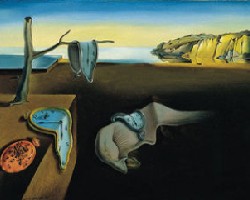
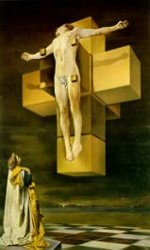
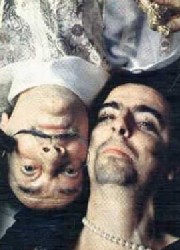
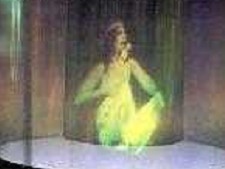
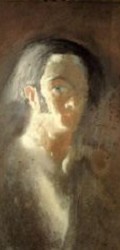
Self-Portrait
First Cylndric Chromo-Hologram
Portrait of Alice Cooper's Brain
Salvador Dali and Alice Cooper
Crucifixion (Corpus Hypercubus)
The Persistence of Memory

